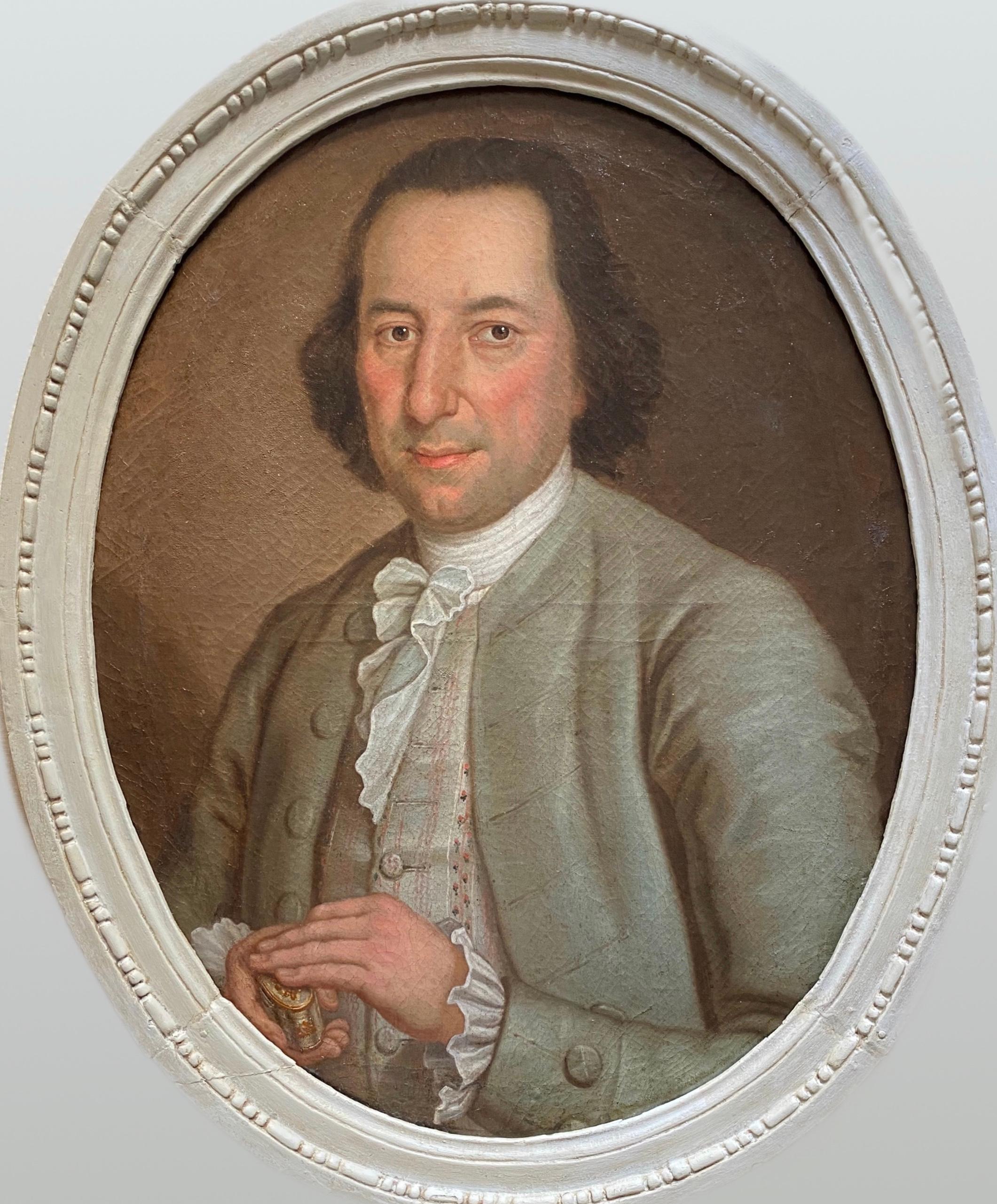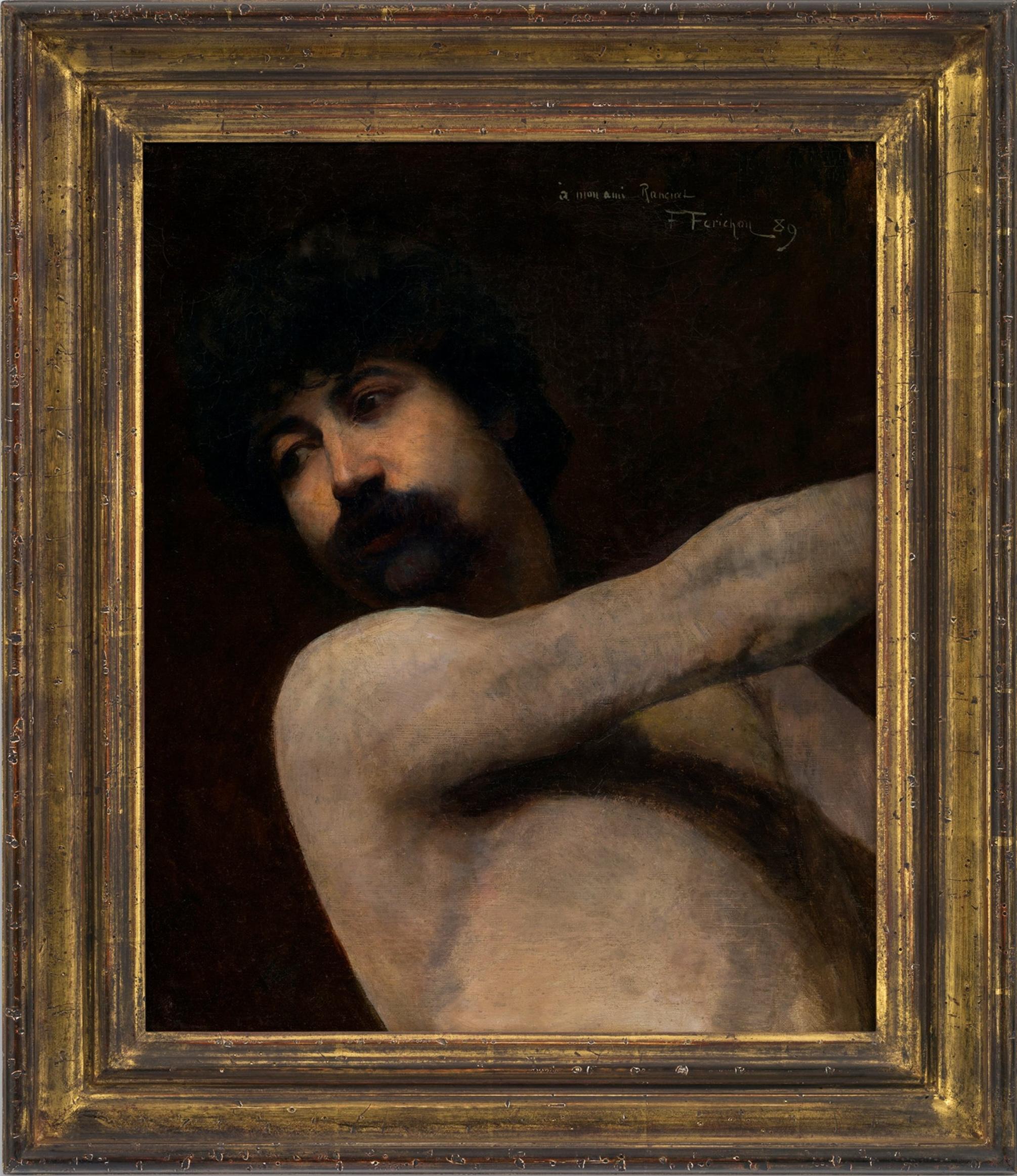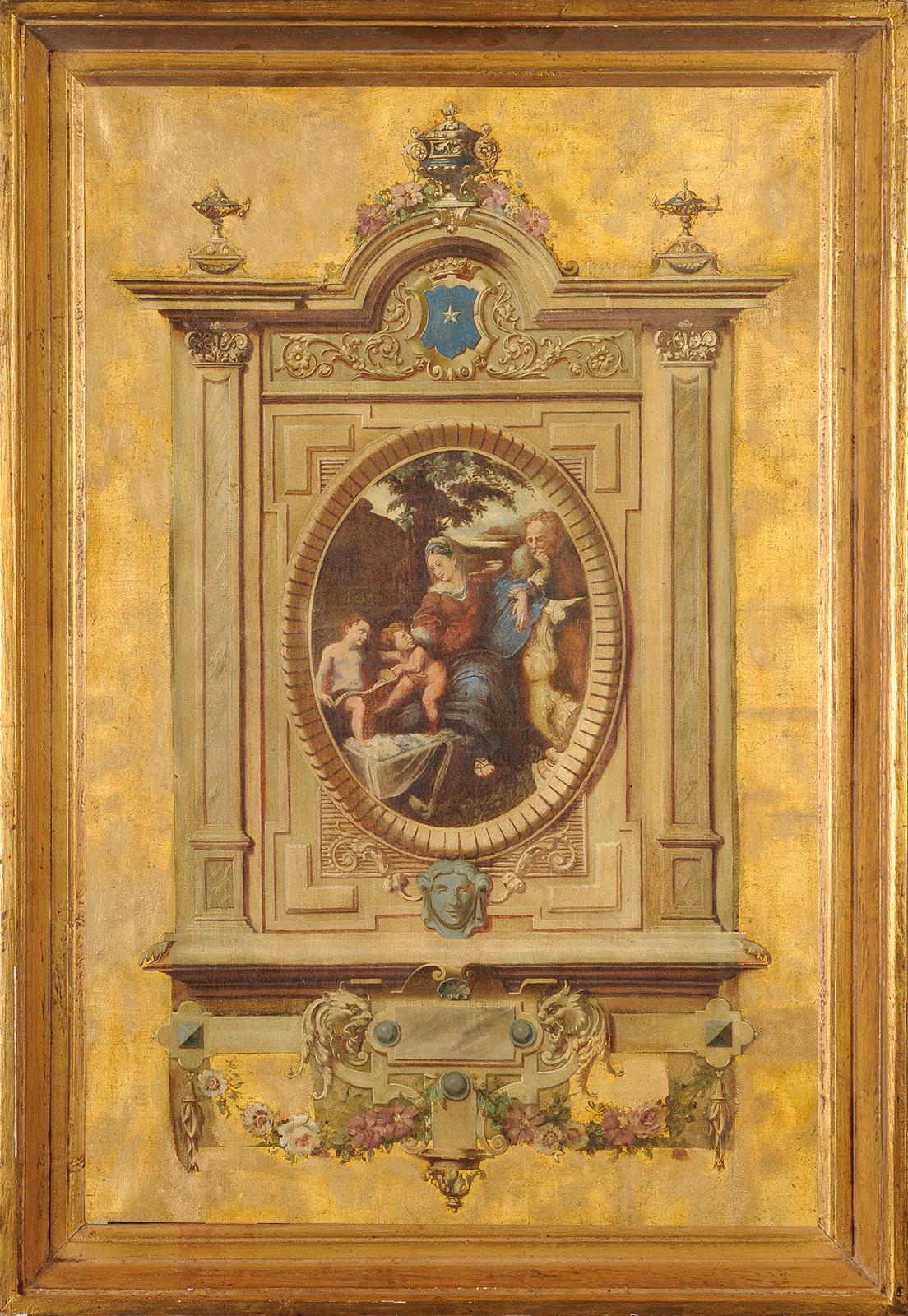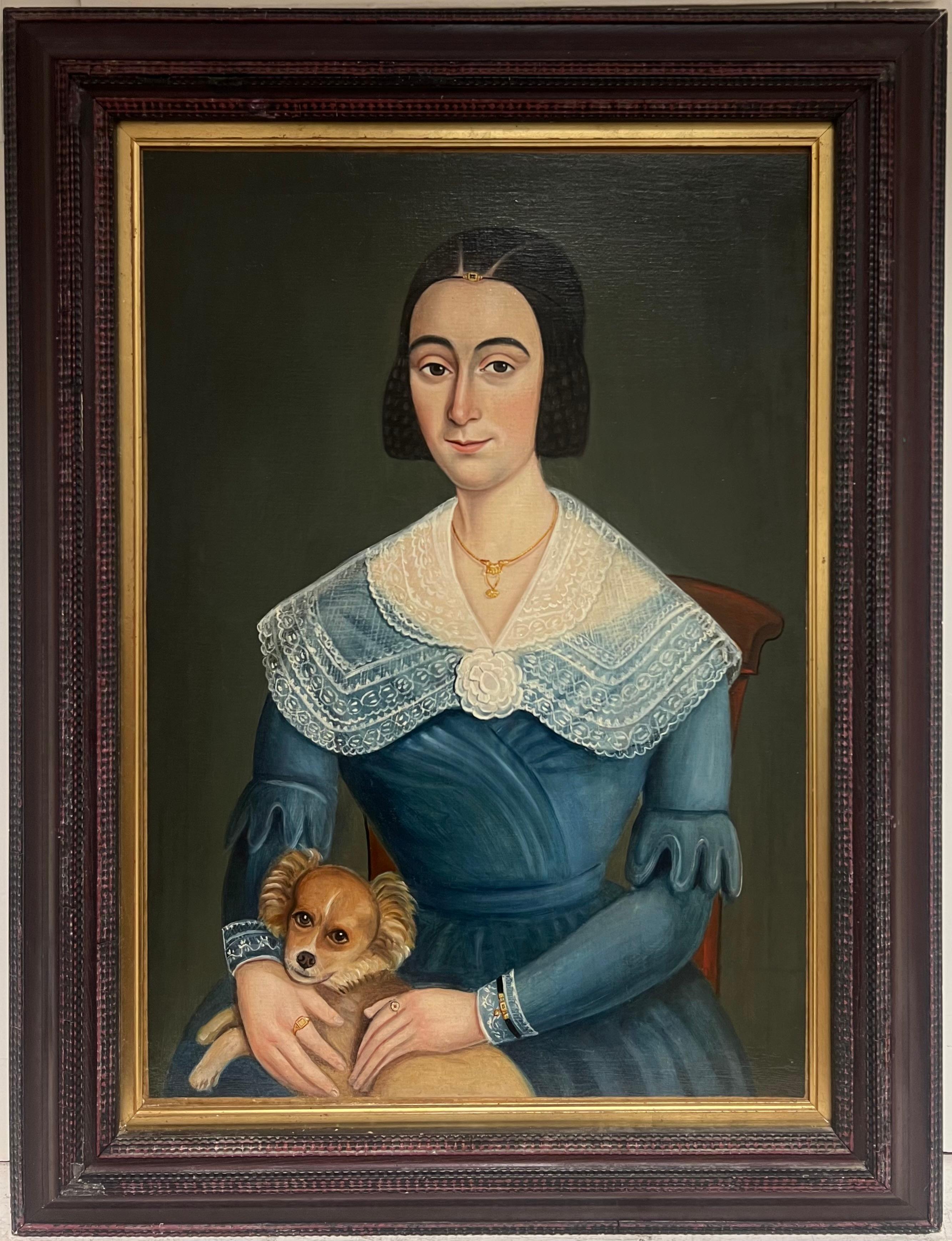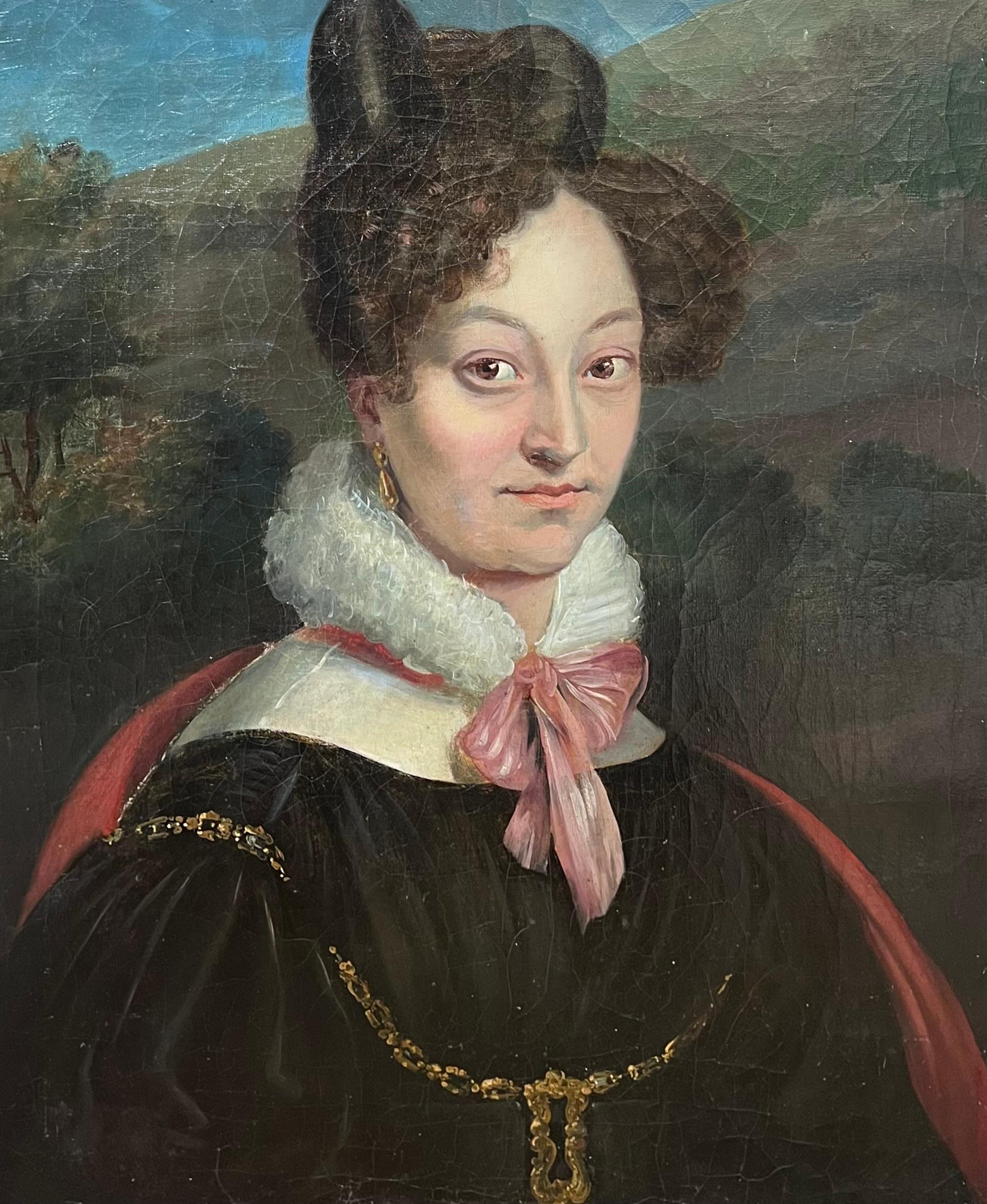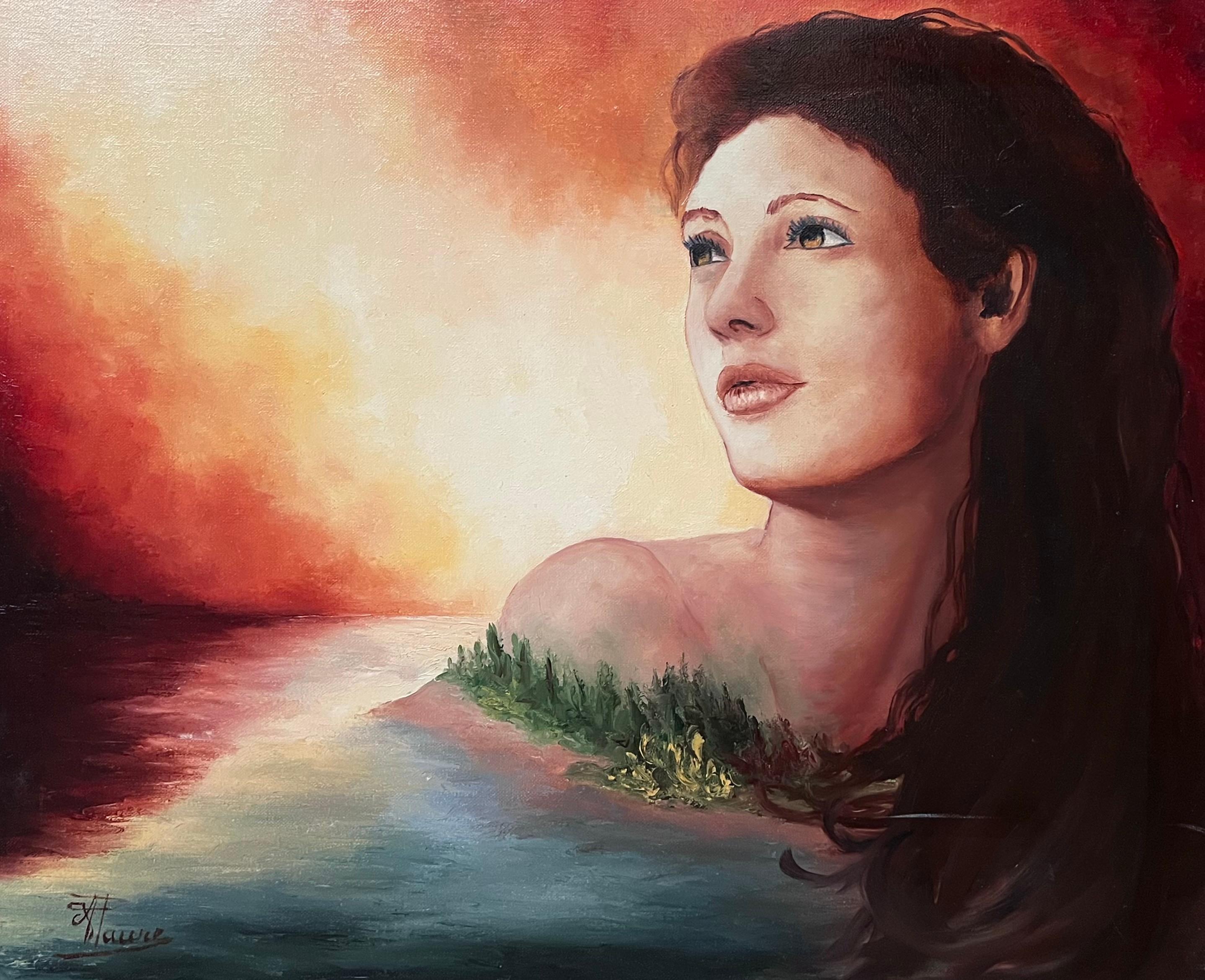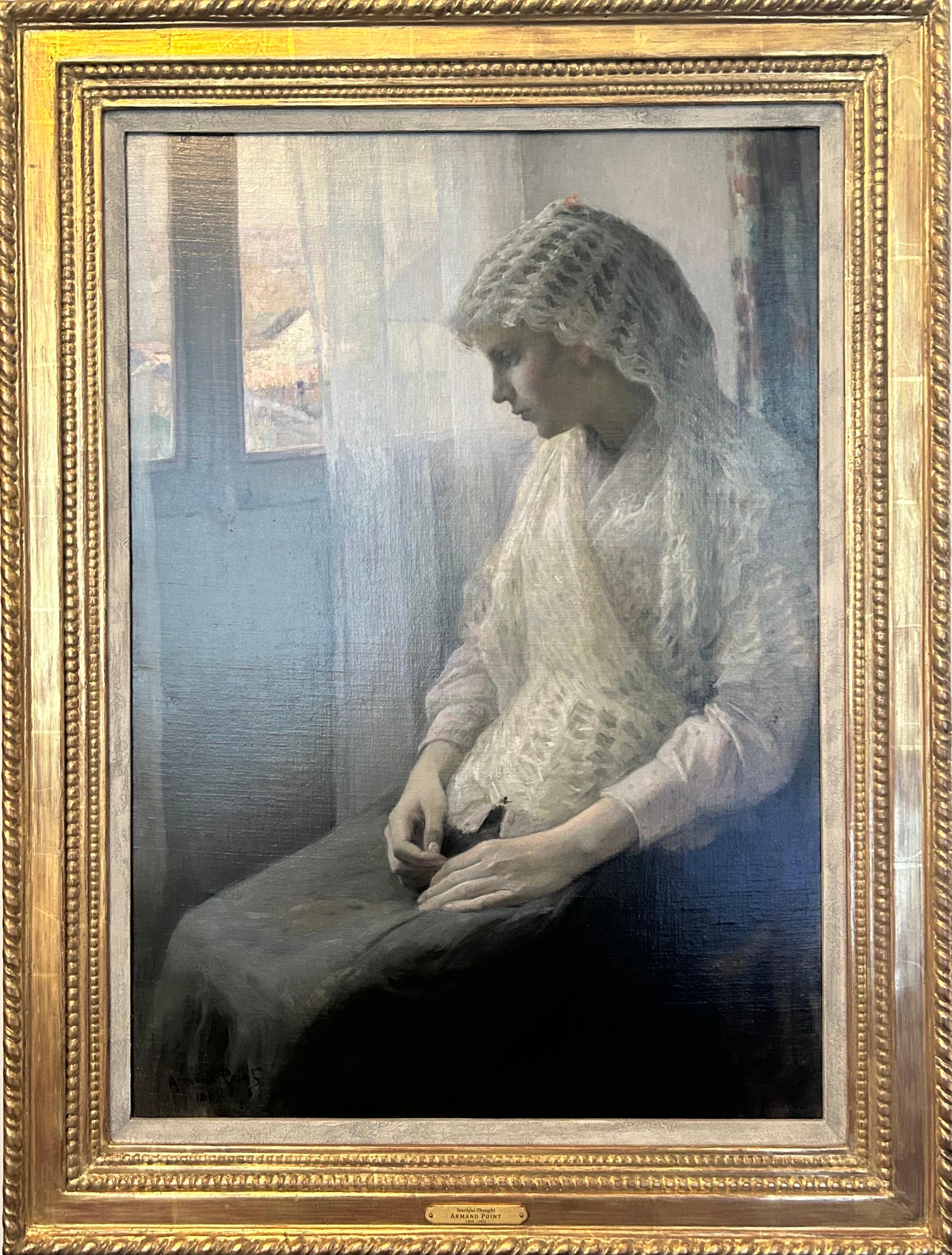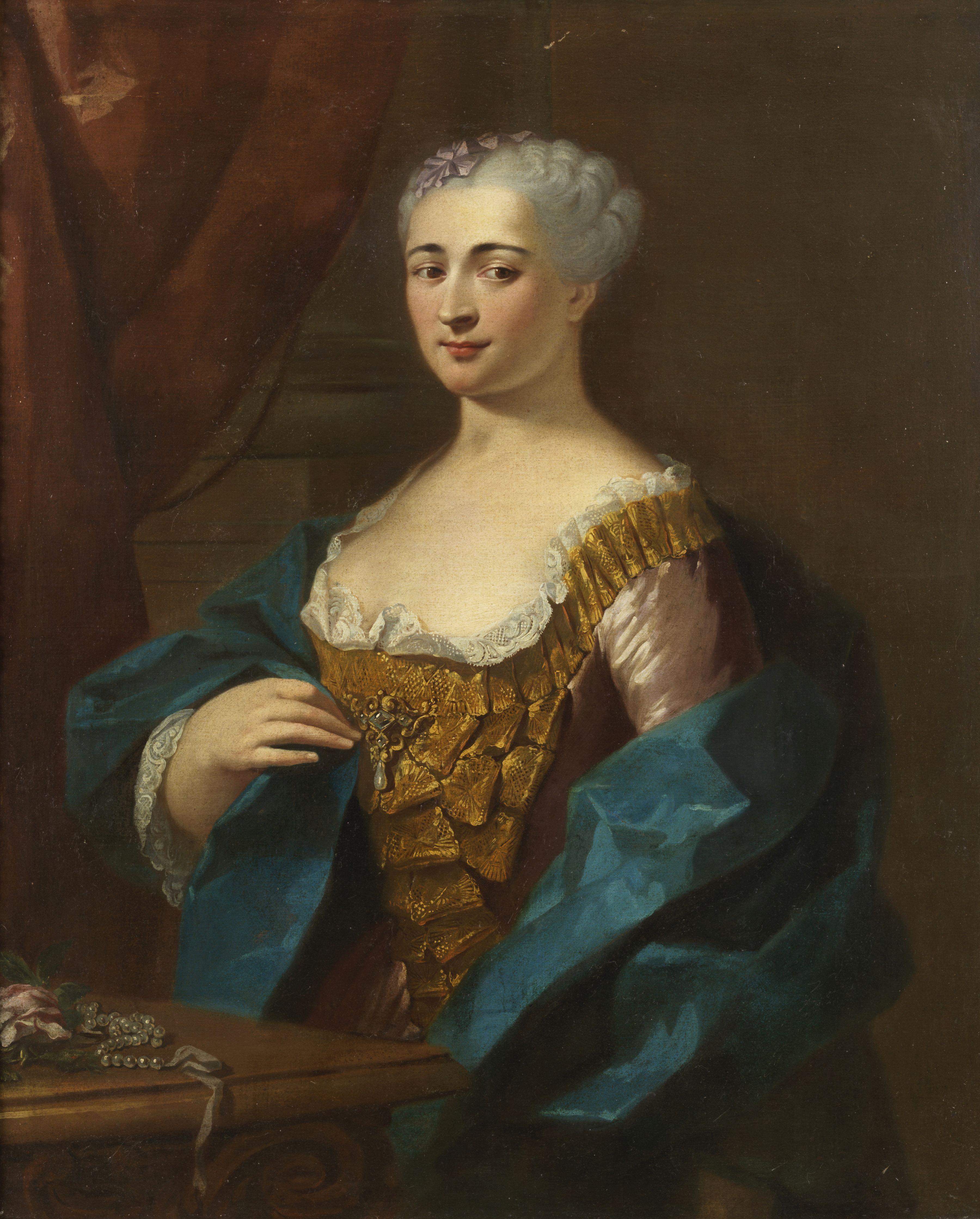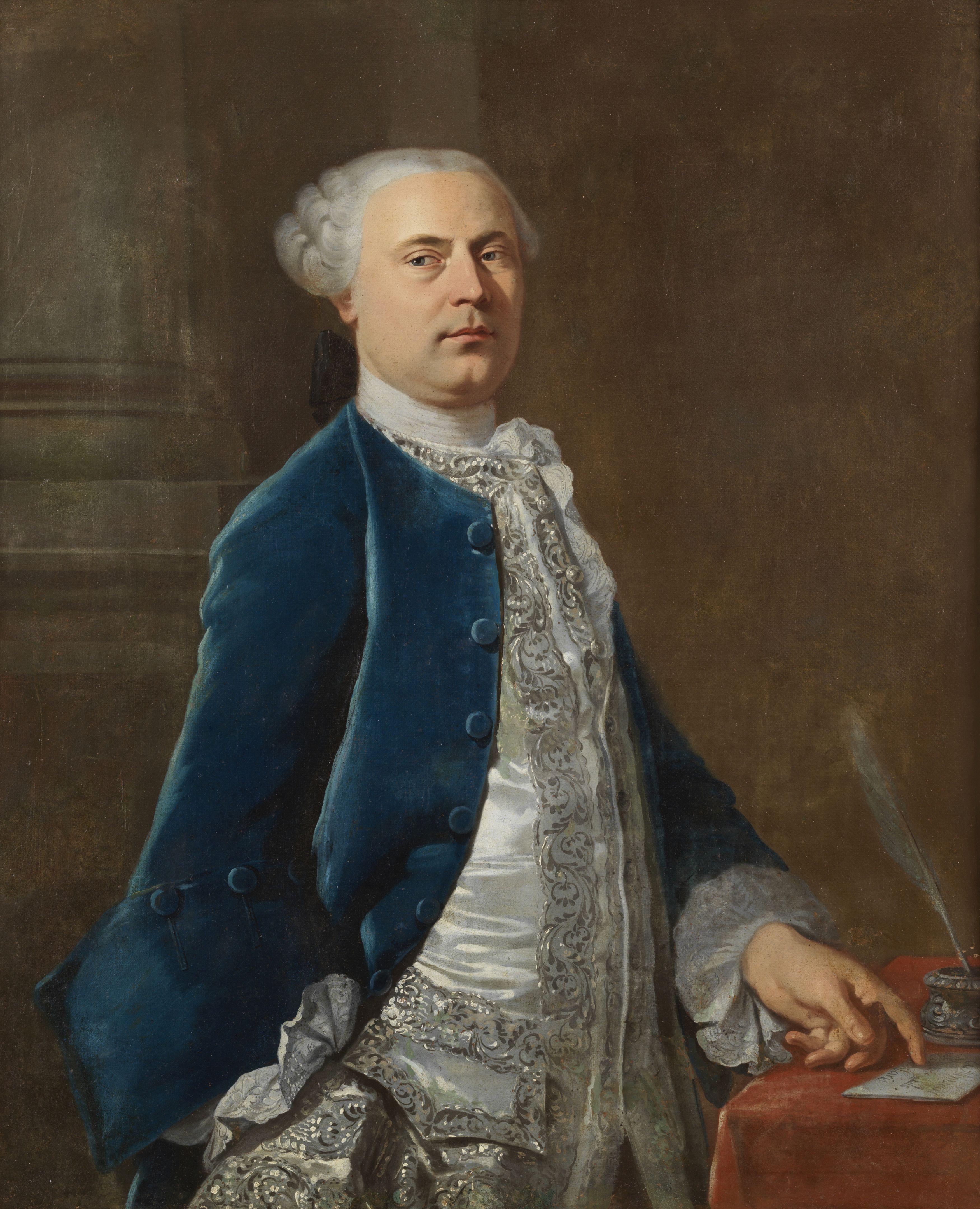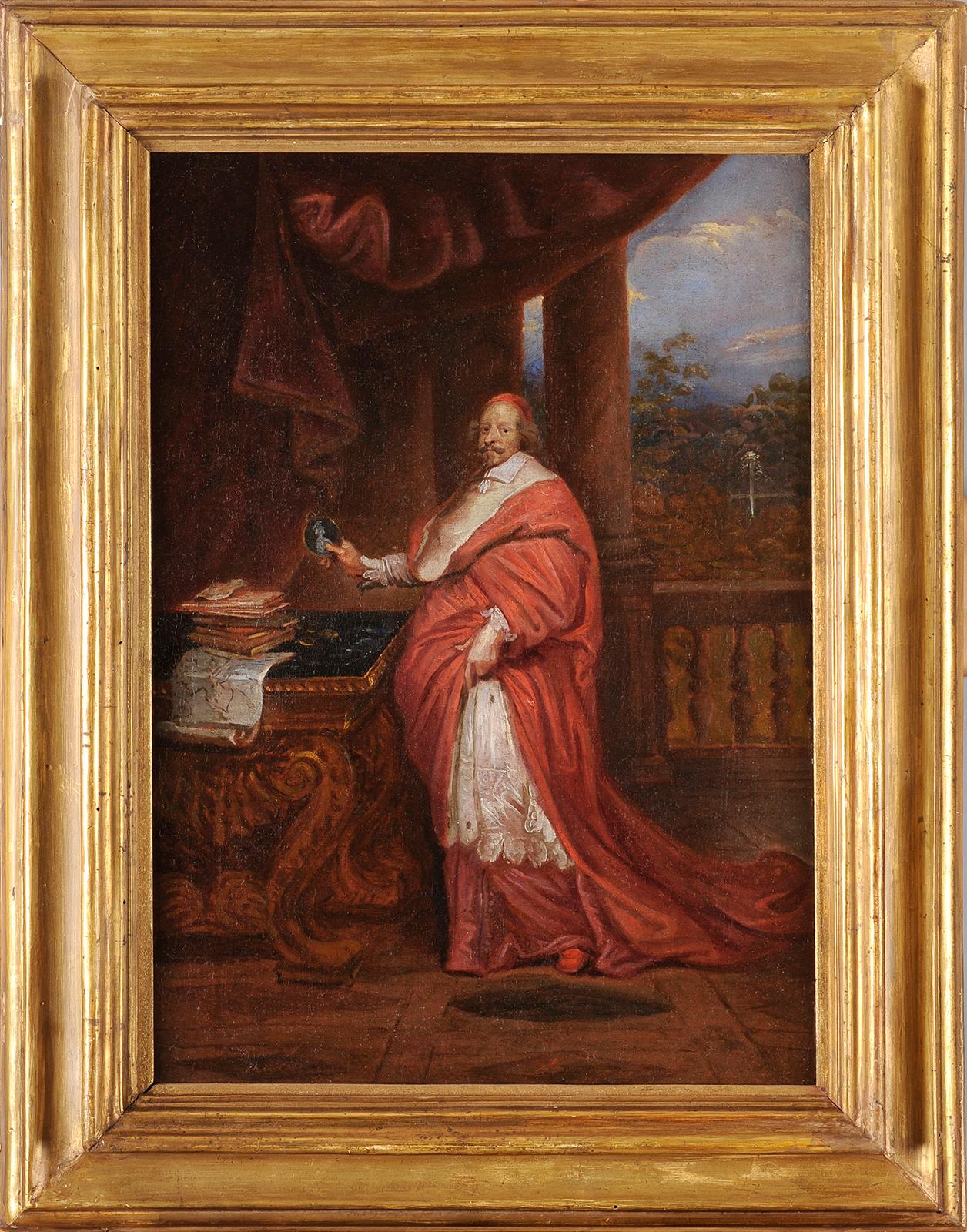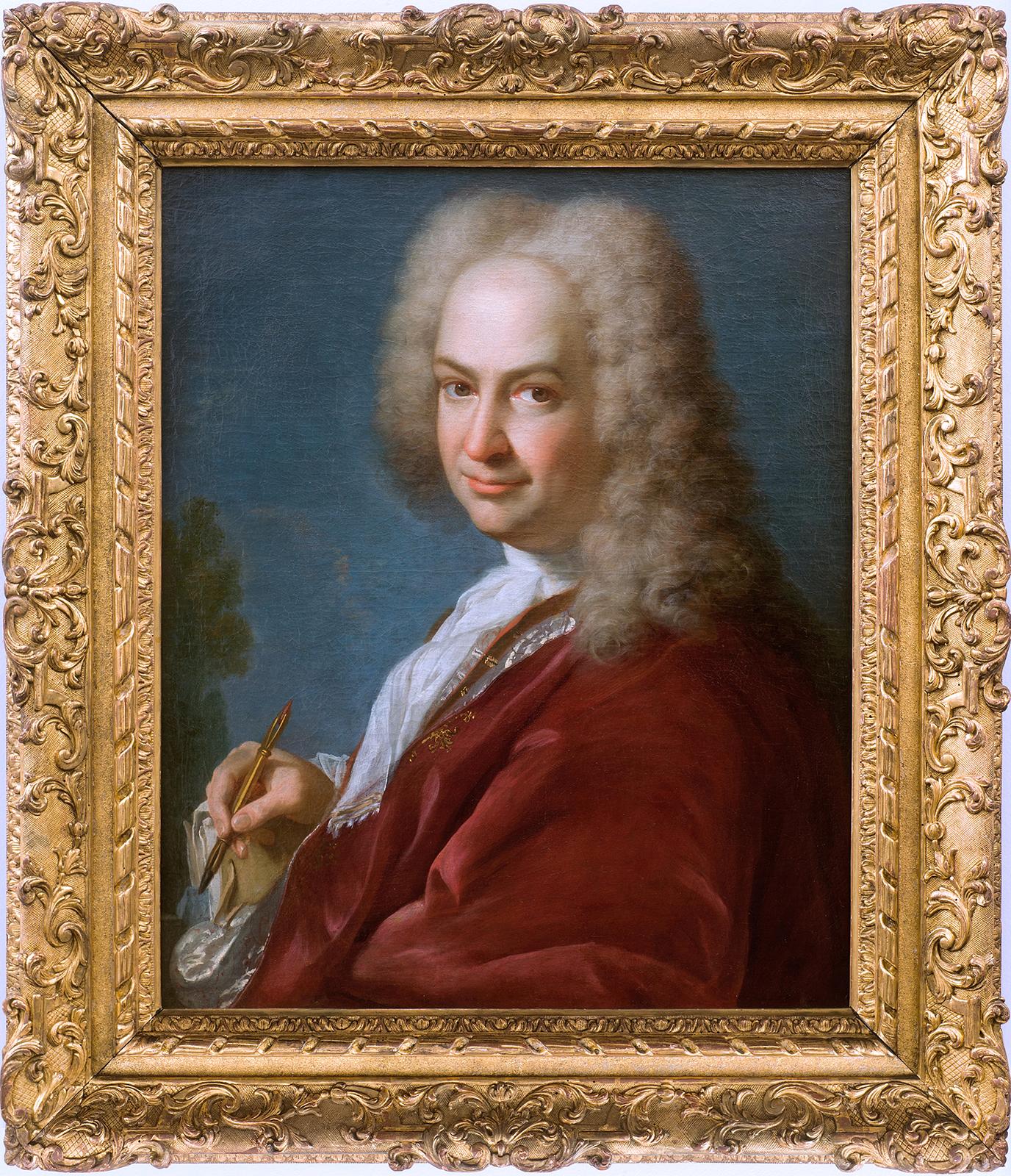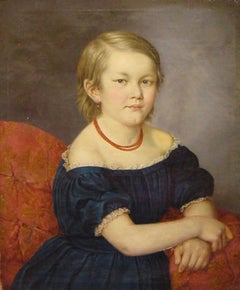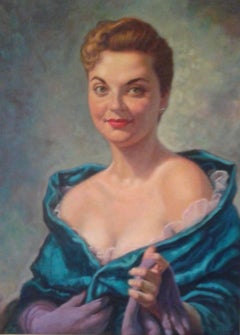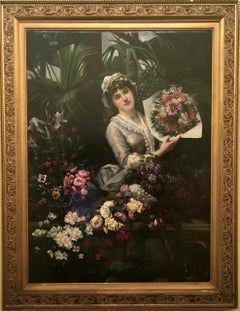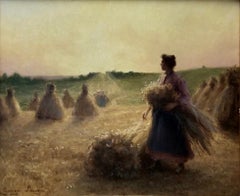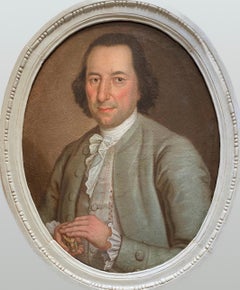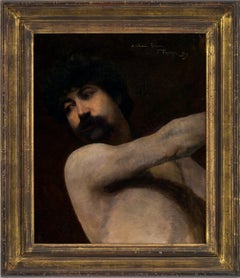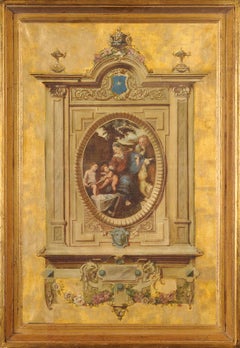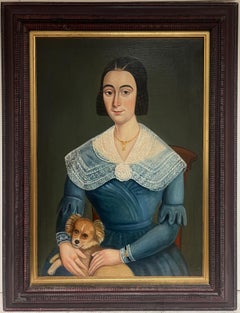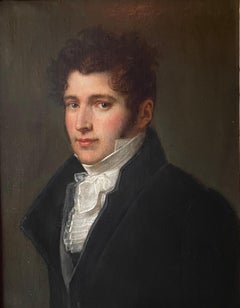
Portrait of a Handsome Young Man wearing a Black Jacket & White Frilly Shirt
View Similar Items
Want more images or videos?
Request additional images or videos from the seller
1 of 9
Portrait of a Handsome Young Man wearing a Black Jacket & White Frilly ShirtCirca 1815
Circa 1815
Price:$7,500
$9,500List Price
About the Item
- Creation Year:Circa 1815
- Dimensions:Height: 24 in (60.96 cm)Width: 18 in (45.72 cm)
- Medium:
- Movement & Style:
- Circle Of:Jacques-Louis David (1748 - 1825, French)
- Period:
- Condition:
- Gallery Location:Rancho Santa Fe, CA
- Reference Number:1stDibs: LU516310511172
About the Seller
5.0
Vetted Professional Seller
Every seller passes strict standards for authenticity and reliability
Established in 1984
1stDibs seller since 2016
89 sales on 1stDibs
Typical response time: 17 hours
Authenticity Guarantee
In the unlikely event there’s an issue with an item’s authenticity, contact us within 1 year for a full refund. DetailsMoney-Back Guarantee
If your item is not as described, is damaged in transit, or does not arrive, contact us within 7 days for a full refund. Details24-Hour Cancellation
You have a 24-hour grace period in which to reconsider your purchase, with no questions asked.Vetted Professional Sellers
Our world-class sellers must adhere to strict standards for service and quality, maintaining the integrity of our listings.Price-Match Guarantee
If you find that a seller listed the same item for a lower price elsewhere, we’ll match it.Trusted Global Delivery
Our best-in-class carrier network provides specialized shipping options worldwide, including custom delivery.More From This Seller
View AllPortrait of a Young Lady w Red Coral necklace 19th century Italian oil painting
By Guerrino Guardabassi
Located in Rancho Santa Fe, CA
Guerrino Guardabassi (Rome 1841 - 1893)
Portrait of a Young Lady
Oil on canvas
24 x 20 1/4 inches (61 x 51.5 cm)x`
32.5 x 28.5 inches framed (82.5 x 72.5 cm framed)
Signed lower left...
Category
Late 19th Century Portrait Paintings
Materials
Canvas, Oil
SALVADOR DE REGIL 1954 Portrait of Marian Virginia Schuster - Surrealist Artist
By Salvador De Regil
Located in Rancho Santa Fe, CA
Marian Schuster was 19 years old in 1954 and attended City College San Francisco where she studied Art.
In the old school, Victorian, San Francisco, moneyed household that she was r...
Category
1950s American Modern Portrait Paintings
Materials
Canvas, Oil
CHRISTIAN ROULLIER Beautiful Woman Arranges Flowers Atrium Greenhouse PARIS 1884
By Christian Henri Roullier
Located in Rancho Santa Fe, CA
Christian-Henri Roullier was born in Lyon, France, in 1845, and was an infant when his parents arrived in gold-rush San Francisco. After much difficulty, Roullier senior found employment at the White House, a pioneer department store owned by a popular and successful French businessman, Raphael Weill. From then, the Roulliers' life took a prosperous turn. Christian-Henri resided with his family in San Francisco at the beginning of his career. During the Franco-Prussian War he was listed, with other members of the city's French community, as a local subscriber to a French patriotic fund. He subsequently traveled to Paris to study painting with Jean-Leon Gerome the leading teacher of the day. He also studied sculpture with W. E. Fremiet and explored both media throughout his life.
A successful artist, Roullier exhibited widely in France. His work was included in most Paris Salon exhibits between 1878 and 1914. He exhibited at the San Francisco Art Association and the Mechanics' Institute of San Francisco in 1883, suggesting that he had returned to San Francisco, perhaps working with Jules Tavernier, whom he depicted in buckskin and knee-high boots in an oil entitled Tavernier Painting. Roullier probably joined the gregarious Tavernier in Monterey as well. Among his portraits, he executed two of Josiah Stanford, now in the collection at the Cantor Center for Visual Arts at Stanford University.
When in France, Roullier and his sister Blanche spent half of their time in Paris, the remainder at a beautiful property the family bought in the small town of Saint-Nizier sous Charlieu, some ten miles from Roanne. Blanche became a successful pastellist who also exhibited at the French salons and received several awards. Like his friend and fellow-painter Armand Charnay, Roullier painted rustic, local scenes of his native region, except for a few canvases of Tunisia done in colors reminiscent of his California work. He died in Paris on July 25, 1926. A retrospective exhibit of his work was held at the 1926 Paris Winter...
Category
1880s French School Figurative Paintings
Materials
Oil, Canvas
Georges Laugée "The Gleaners" French Peasant Woman Working in Field oil/canvas
Located in Rancho Santa Fe, CA
Georges Laugée was a painter known for portrait and peasant figures in landscape painting. He was influenced by William Bouguereau and Jules Breton, gracing the figures in his compos...
Category
Late 19th Century French School Figurative Paintings
Materials
Canvas, Oil
Bouquet of Roses in a Brass Pot - Aimé Perret 19th century oil painting
Located in Rancho Santa Fe, CA
Oil on canvas
38 x 29. 1/2 inches (96.5 x 74.9 cm.)
Framed: 51 x 42 inches
Signed lower right: Aimé Perret
Aimé Perret participated regularly in the Salon in Paris, from 1870 to 188...
Category
Late 19th Century French School Still-life Paintings
Materials
Oil, Canvas
Edmond M Petitjean "Etang devant une ville" French landscape c. 1900 oil/canvas
By Edmond Marie Petitjean
Located in Rancho Santa Fe, CA
Edmond Petitjean was born July 5, 1844, in Vosges. He made his debut at the Salon of 1874 and became a member of Salon of French Artists in 1883. He exhibited in Munich from 1890. H...
Category
Late 19th Century French School Landscape Paintings
Materials
Canvas, Oil
You May Also Like
Portrait of an aristocrat with a precious box, ca 1770, Louis XV enlightenment
Located in Norwich, GB
What is so wonderful and unusual about this 18th Century portrait is the relatability of the sitter. There is an openness to the world in his gaze, curiosity, a sense of humour, pass...
Category
Late 18th Century French School Portrait Paintings
Materials
Canvas, Oil
Academic Study
Located in London, GB
Oil on canvas
Signed, dated and dedicated (upper right)
46cm × 38cm (59cm × 51cm framed)
Forichon was a pupil of the Ecole des Beaux-Arts de Paris and was taught by Jean-Léon Gérôme...
Category
1880s French School Figurative Paintings
Materials
Canvas, Oil
Holy family under an oak tree on a gold background
Located in BELEYMAS, FR
French school circa 1870
Holy Family under an oak, after Raphaël, on gold background
Oil on canvas
H. 92 cm; W. 60 cm
This aesthetic curiosity takes up the very famous composition b...
Category
19th Century French School Portrait Paintings
Materials
Canvas, Oil
Mid 19th Century French Provincial Oil Portrait of Lady & Her Dog, framed
Located in Cirencester, Gloucestershire
Portrait of a Lady with her Pet Dog
French School, mid 19th century
oil on canvas, framed
framed: 36 x 28 inches
canvas: 29 x 20 inches
Provenance: private collection, France
Conditi...
Category
Mid-19th Century French School Portrait Paintings
Materials
Oil, Canvas
French Empire Period Portrait of Fashionable Young Lady Antique Oil Painting
Located in Cirencester, Gloucestershire
Portrait of a Young Lady
French School, early 1800's period
oil on canvas, unframed
canvas: 26 x 21 inches
Provenance: private collection, France
Condition: some crazing and pronoun...
Category
Early 19th Century French School Figurative Paintings
Materials
Oil, Canvas
Large Signed 20th Century French Oil Painting Symbolist Lady Staring into Sky
Located in Cirencester, Gloucestershire
Pensive Thoughts
by Annie Faure (French 1940-2021)
signed lower corner
oil painting on canvas, unframed
canvas size: 19.5 x 24 inches
condition: overall very good, minor surface scuf...
Category
Late 20th Century French School Portrait Paintings
Materials
Oil, Canvas
Recently Viewed
View AllMore Ways To Browse
Oil Portraits Of Handsome Young Man
Portrait Of A Young Lady
16x20 Portrait Painting
Dutch Master Portrait
18th Century Portrait Oil Paintings
Portrait Of Mother And Child
Portrait Woman Yellow
20th Century Portrait Of A Lady
Antique Military Painting
Flemish Portrait
Mid Century Woman Portrait Painting
English 18th Century Portrait Paintings
Portrait Of Charles I
Military Portrait Paintings
Child Antique Portraits
Abstract Female Portrait Painting
Portrait Of Gentleman
Officer Portrait
